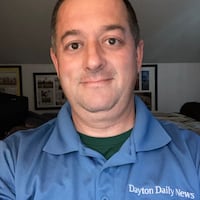Dayton’s experience in 2020 — as goes with pretty much everything in this pandemic-dominated year — will be much different. The Flyers will open the season at 9:30 p.m. Nov. 25 against Wichita State in the Crossover Classic at the Sanford Pentagon in Sioux Falls, S.D. The average temperature on that date in Sioux Falls is 37 degrees.
“We don’t have sandy beaches in South Dakota,” said Jesse Smith, vice president of operations for the Sanford Sports Complex. “We don’t have 80-degree weather in November. But we are very confident we can deliver an unparalleled basketball experience to all these teams and fans that will be in Sioux Falls.”
Dayton will play Creighton or Utah on the second day of the tournament, either in the semifinals or the consolation round. Creighton and Utah play at 7 p.m. in the third game of the first day, right before Dayton and Wichita State.
On the other side of the bracket, West Virginia plays Texas A&M at 1 p.m. in the first game of the event. Ohio State then plays Memphis at 3:30 p.m. All the games throughout the tournament will be televised on ESPN channels.
The eight teams will not get to enjoy the scenery in Sioux Falls, a city on the east side of the state near the borders of Minnesota and Iowa and not far from the northern border of Nebraska. They will arrive on Nov. 23, two days before their first games.
“When they get here, the plan is to drive them straight to the (COVID-19) testing area,” said Dr. Jeremy Cauwels, senior vice president of clinic quality for Sanford Health. “From that point, they’ll be brought back to their rooms, and they will stay in their rooms. Nobody touches the (basketball) floor until their test is negative. That way we can ensure that the basketball courts are clear. And that will include everybody in that bubble."
Dayton will open the season against Wichita State. pic.twitter.com/ZmrzKhBaWm
— David Jablonski (@DavidPJablonski) October 14, 2020
That bubble includes people in three different tiers, which were defined by the NCAA in planning for the 2020-21 season.
“Tier One is a group of roughly 30 people,” Cauwels said, “and by roughly, I say it’s the 15 people playing basketball, the coaching staff and the other folks that are going to be interacting hand to hand with the players. Those folks will be appropriately tested throughout the time that they’re here.
“The second tier is the people that are, for lack of a better word, bringing people stuff. We have to make sure that we have processes for getting them the food they need and getting them the places to stay and making sure that if somebody does test positive, we have a separate place for them to stay. All of those things are making sure that bubble stays intact and they don’t inadvertently expose someone from the same school or from a different school.”
People who fall into the third tier are janitors, vendors and anyone else who works in the building but doesn’t come into direct contact with the team.
“We still have to make sure they’re disease free if they’re going to be cleaning, if they’re going to be working on the benches,” Cauwels said.
While fans will be allowed to attend games and tickets go on sale Nov. 1, attendance will be limited. Tournament organizers have not said yet how many fans will be allowed in the building.
Fans will enter and exit the building from entrances different than people in the three tiers and will be kept out of the bubble-type environment on the court.
“Fans will not be able to access the floor,” Smith said. “Whoever is on the floor is going to be inside that. It’s going to look a lot like the (NBA) bubble in Orlando with the plexiglass and bench spacing, some of those aspects. That’s what we are moving toward.”
About the Author
